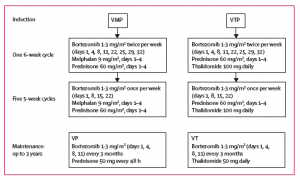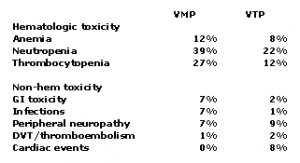While reading the latest New England Journal of Medicine, it was hard not to notice the focus on ALK mutations and crizotinib (Pfizer), with four articles in all on the topic, including a full original article, two brief reports and an editorial to boot.
Historical background
Gradually, we are gradually seeing more specific molecular markers and targets evolve in non-small cell lung cancer (NSCLC), which is a particularly difficult cancer to treat. This is good news because if we have a relevant target, we can treat subsets of patients with specific drugs and increase their chances of better outcomes while sparing those who are unlikely to respond from the systemic effects of a potent drug. Many call this ‘personalised medicine’ but I prefer to think of it as targeted therapy, because we are essentially matching the drug to the patient’s needs using biomarkers.
The first mutation that evolved in lung cancer, epidermal growth factor receptor (EGFR), was shown to be important in a subset of patients who tested positive for the activating mutation and tend to do well on EGFR therapy with drugs such as erlotinib (OSI/Roche/Genentech) or gefitinib (AstraZeneca).
Originally, two groups reported the discovery of the anaplastic lymphoma kinase (ALK) fusion gene in lymphoma in 1994. Once translocation has occurred between the EML4 and ALK genes it produces a fusion gene, EML4-ALK, which generates aberrant signaling in cancer.
There was, however, much buzz and excitement three years ago when Japanese researchers reported activating mutations or translocations of ALK in NSCLC. Soda et al’s seminal 2007 paper in Nature is well worth reading from a historical perspective (the link below offers a rare free download from the publishers). As far as I can tell from the literature and talking to lung cancer specialists, the ALK mutation occurs in approx 2-7% of lung cancers. This may sound like a small number, but right now we don’t have anything approved specifically for this particular subset of patients.
Since the Soda paper linking the ALK mutation with lung cancer, we have been fortunate to follow the progress of a compound, originally in development as a c-MET inhibitor, crizotinib. Serendipity is a fine thing sometimes, as the agent had weak Met activity, but Pfizer realised that it had potent ALK activity and sensibly switched the development strategy to investigate it’s possible role in targeting ALK in people with lung cancer. This was a smart decision that is now paying off with a raft of promising data coming out this year at the ASCO and ESMO cancer conferences.
The data from ESMO
Data from a phase I trial was reported in Milan last month. The study consisted of two parts:
- A dose-escalation study that enrolled patients with advanced solid tumors (n=37), including NSCLC, colorectal, pancreatic and inflammatory myofibroblastic tumors (IMT), to determine toxicity and the maximum tolerated dose (MTD).
- An expansion cohort, where patients with ALK-positive advanced NSCLC (n=113) were prospectively identified and enrolled with a dose of 250mg twice daily (BID), in order to evaluate the safety and activity of crizotinib in this patient population. All patients had received at least one prior chemotherapy regimen.
Let’s focus on part 2 and the lung cancer patients for brevity. An important point to note is that majority of patients in the analysis had adenocarcinoma histology and were never or former smokers. The progression free survival (PFS) results were particularly impressive. At the time of the analysis, preliminary median PFS was 9.2 months (95% CI: 7.6, 10.3), with a median follow-up of 8 months. Nearly half (47.8%) of the patients with NSCLC remain in follow-up for PFS, while 32% of patients experienced disease progression. Of those who progressed, 42% continued to receive treatment with crizotinib, as they were determined by investigators to be receiving continued clinical benefit.
The side effect profile showed the agent was well tolerated. The most commonly reported adverse events (all grades) included nausea, diarrhea, mild visual disturbances, and vomiting. Grade 3 ALT (alanine aminotransferase) and AST (aspartate aminotransferase) elevations occurred in four patients. One patient experienced a grade 4 ALT, another had grade 3 pneumonitis and one patient discontinued the study due to treatment-related adverse events. Neutropenia, lymphopenia and fatigue were also reported at grade 3 severity (n=6). Compared to standard chemotherapy regimens used to treat NSCLC, I think this looks a much more tolerable and acceptable profile so far.
The NEJM data
The NEJM article from Kwak et al., (2010) describes updated results from the part 2 expansion cohort in the phase I trial described above and offers an updated snapshot of the 82 patients reported at ASCO. The findings (at the data cut-off) were as follows:
- The main side effect was mild GI symptoms (grade 1 or 2) and grade 3/4 events were similar to those reported at ESMO.
- The overall response rate was 57%, with a mean of 6.4 months.
- There was 1 confirmed complete response (CR) and 46 confirmed partial responses (PR). 27 patients (33%) had stable disease.
- A total of 63 of 82 patients (77%) were continuing to receive crizotinib.
- The estimated 6 month PFS rate was 72%.
These data illustrate the value in molecular prescreening large numbers of people with NSCLC to determine who should receive the agent. Interestingly, the ALK mutation was found in approx. 5% of those who underwent screening. It’s unclear from the paper whether any of the patients who were ALK+ also had an EGFR mutation or whether they are mutually exclusive, but if any patients with NSCLC have both, it would interesting to see if a combination with crizotinib and erlotinib would improve survival.
Overall, these results are both very encouraging and promising for a phase I trial. Certainly, I haven’t been as excited about such early data since the imatinib (Gleevec) phase I data was presented by Brian Druker (OHSU) in 1999. Crizotinib is certainly something I will be eagerly following as it progresses through R&D and Pfizer should be applauded for their speedy development in clinical trials once the ALK mutation was discovered and published.
The future
Beyond lung cancer, another article in the NEJM described the impact of crizotinib in treating ALK-rearranged inflammatory myofibroblastic tumour (IMT) (see link below). This is a rare soft tissue sarcoma arising out of mesenchymal cells and characterised by spindle cell proliferation with an inflammatory element. Butrynski et al., describe a single case report of a patient with a sustained partial response to crizotinib, thereby potentially offering a new therapeutic strategy for treating these patients.
The Japanese researchers have also described mutations that confer resistance to ALK inhibitors. Choi et al., have now reported the discovery of two secondary mutations (L1196M and C1156Y) within the kinase domain of ELM4-ALK that conferred resistance to treatment in the NEJM (see link below). This is important, as we have learned from the CML experience, because different inhibitors may target different mutations, thereby allowing sequencing and selection of treatment according to the molecular status of each patient. The parallels between CML and NSCLC in treating a translocation fusion gene are quite striking. Aside from Pfizer, a number of other companies are also developing ALK inhibitors including Ariad, Chugai/Roche, Infinity and Cephalon. No doubt others will also follow into the clinic soon, which is great news for patients.

Morris, S., Kirstein, M., Valentine, M., Dittmer, K., Shapiro, D., Saltman, D., & Look, A. (1994). Fusion of a kinase gene, ALK, to a nucleolar protein gene, NPM, in non-Hodgkin’s lymphoma Science, 263 (5151), 1281-1284 DOI: 10.1126/science.8122112
Shiota M, Fujimoto J, Semba T, Satoh H, Yamamoto T, & Mori S (1994). Hyperphosphorylation of a novel 80 kDa protein-tyrosine kinase similar to Ltk in a human Ki-1 lymphoma cell line, AMS3. Oncogene, 9 (6), 1567-74 PMID: 8183550
Soda, M., Choi, Y., Enomoto, M., Takada, S., Yamashita, Y., Ishikawa, S., Fujiwara, S., Watanabe, H., Kurashina, K., Hatanaka, H., Bando, M., Ohno, S., Ishikawa, Y., Aburatani, H., Niki, T., Sohara, Y., Sugiyama, Y., & Mano, H. (2007). Identification of the transforming EML4–ALK fusion gene in non-small-cell lung cancer Nature, 448 (7153), 561-566 DOI: 10.1038/nature05945
Kwak, E., Bang, Y., Camidge, D., Shaw, A., Solomon, B., Maki, R., Ou, S., Dezube, B., Jänne, P., Costa, D., Varella-Garcia, M., Kim, W., Lynch, T., Fidias, P., Stubbs, H., Engelman, J., Sequist, L., Tan, W., Gandhi, L., Mino-Kenudson, M., Wei, G., Shreeve, S., Ratain, M., Settleman, J., Christensen, J., Haber, D., Wilner, K., Salgia, R., Shapiro, G., Clark, J., & Iafrate, A. (2010). Anaplastic Lymphoma Kinase Inhibition in Non–Small-Cell Lung Cancer New England Journal of Medicine, 363 (18), 1693-1703 DOI: 10.1056/NEJMoa1006448
Choi, Y., Soda, M., Yamashita, Y., Ueno, T., Takashima, J., Nakajima, T., Yatabe, Y., Takeuchi, K., Hamada, T., Haruta, H., Ishikawa, Y., Kimura, H., Mitsudomi, T., Tanio, Y., & Mano, H. (2010). EML4-ALK Mutations in Lung Cancer That Confer Resistance to ALK Inhibitors New England Journal of Medicine, 363 (18), 1734-1739 DOI: 10.1056/NEJMoa1007478
Hallberg, B., & Palmer, R. (2010). Crizotinib — Latest Champion in the Cancer Wars? New England Journal of Medicine, 363 (18), 1760-1762 DOI: 10.1056/NEJMe1010404
Butrynski, J., D’Adamo, D., Hornick, J., Dal Cin, P., Antonescu, C., Jhanwar, S., Ladanyi, M., Capelletti, M., Rodig, S., Ramaiya, N., Kwak, E., Clark, J., Wilner, K., Christensen, J., Jänne, P., Maki, R., Demetri, G., & Shapiro, G. (2010). Crizotinib in ALK-Rearranged Inflammatory Myofibroblastic Tumor. New England Journal of Medicine, 363 (18), 1727-1733 DOI: 10.1056/NEJMoa1007056
 The test from
The test from 
